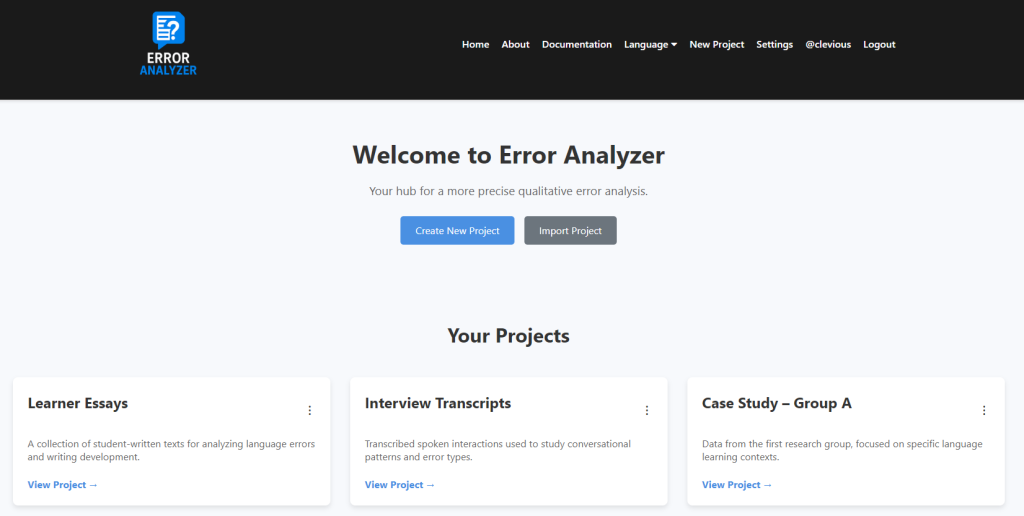In Error Analyzer, the Project is the central unit of organization and the foundation of every analysis. A Project functions like a self-contained research workspace or a digital laboratory created for a specific study or dataset. Instead of keeping all documents in a single mixed collection, each Project defines a controlled environment where every component of the analysis, from the raw texts to the applied tags and exported reports, is structured and contextually grounded.

The project-based design provides a clear methodological advantage. When you create a Project, you establish its key parameters, beginning with the language of the documents. This step is more than administrative; it directly informs the linguistic tools of the application, ensuring that grammatical and syntactic analyses are tailored to the language under study and delivered with greater accuracy.
A Project also acts as a record of your research process. By naming the Project and supplying a description, you create a digital counterpart to the traditional lab notebook. This metadata documents the research questions, the source of the corpus, and any other contextual details that support interpretation. Returning to a Project at a later stage, you are immediately reminded of its purpose and scope, which enhances clarity and supports reproducibility.
In linguistic practice, a Project becomes essential whenever you want to analyze a clearly defined set of texts with a particular research goal. For example, a researcher studying tense and aspect errors in learner French essays would begin by creating a Project dedicated to that corpus. The Project could be named French L2 Tense and Aspect and include a description noting the learners’ proficiency level, the source of the essays, and the research questions guiding the study. This approach ensures that the data, annotations, and eventual reports remain tied to that specific inquiry, rather than being lost in a general pool of documents.
Ultimately, the Project Workspace is what enforces structure in your workflow. It allows you to manage multiple studies in parallel while keeping each dataset and its annotations isolated, organized, and methodologically consistent.